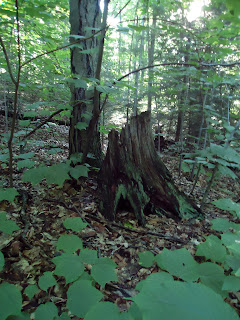Weekly CSA offering the northeast US shiitake mushrooms for health & healing
2.29.12Many people appreciate the texture and unique taste of mushrooms without really knowing the full extent of their nutritional qualities. In fact, its easy to make the case that shiitake mushrooms are a superfood. Some of these amazing attributes include:
GREAT SOURCE OF PROTEIN WITH ZERO SATURATED FATS
The proteins contained in shiitake are composed of 18 types of amino acids, including 7 of the 8 essential amino acids in a ratio similar to the "ideal protein" for humans. These mushrooms are one of the best sources of protein you can eat, especially for vegetarians/vegans looking to substitute animal proteins in their diet. (Resource)
SHOWN TO SIGNIFICANTLY LOWER CHOLESTEROL LEVELS
Multiple studies conducted over the last ten years have demonstrated that an active component in shiitake called eritadenine "significantly decreased the plasma total cholesterol concentration, irrespective of dietary fat sources..." (Resource)
CONTAINS ANTI-CANCER PROPERTIES
The polysaccharide lentinan, a (1-3) ß-D-glucan, is the compound most associated with cancer prevention properties of shiitake. In addition, lab experiments have shown that many of the trace components in shiitake provide blockages to tumor growth, and researchers have proposed that more than 100 different types of compounds in shiitake mushrooms may work together to accomplish anti-tumor results. (Resource)
SUPPORTS IMMUNE SYSTEM BALANCE
The best documented health benefit, shiitake mushrooms are a unique supporter of the immune system. What is most interesting are that a number of studies have demonstrated the ability of shiitake to help prevent excessive immune system activity. At the same time, an equal number of studies have shown the ability of shiitake mushrooms to help stimulate immune system responses under certain circumstances. From a dietary perspective this means that shiitake appear to both give the system a boost when needed, and cut back on activity when beneficial to the body. (Resource)
PACKED FULL OF VITAMINS & ENZYMES
"Shiitake mushrooms are an excellent source of three B vitamins (vitamins B2, B5 and B6), a very good source of one additional B vitamin (B2); a very good source of six minerals (manganese, phosphorus, potassium, selenium, copper and zinc); a very good source of dietary fiber; and a good source of protein, magnesium, and vitamin D." In addition, fresh shiitake contain over 30 different enzymes. (Resource)
(Links to references for the above can be found at: http://tinyurl.com/AgroforestryResources)
Understory Mushrooms, based out of Mecklenburg, NY is selling weekly CSA shares of log-grown shiitake mushrooms this season, conveniently available alongside vegetable CSA pick up locations in Ithaca and Trumansburg, NY or mailed directly to your door!
Our season begins in late June and runs through early September.
Membership Benefits:
- A share of fresh, log grown mushrooms each week
- Weekly recipe, update from the farm, and mushroom facts
- Two quart mason jars of dried mushrooms for storage at the end of the season
- Discounts on our spring workshops & other products we sell
- A few mushroom-related surprises along the way!
Choose from three sizes:
SMALL: 1/2 pound for $8/week = $96 (enough for one hearty mushroom meal)
MEDIUM: 1 pound for $12/week = $144 (enough to enjoy in a few meals)
LARGE: 2 pounds for $22/week = $264 (you are in mushroom heaven - ideal for vegetarians looking for quality protein)
If you wish to receive shiitake by mail, shipping charges apply.
Mushrooms are also available by pound fresh and by the ounce dried, with ample notice.
See our website for more details. Shares are limited! Sign up today.
www.UnderstoryMushrooms.com










